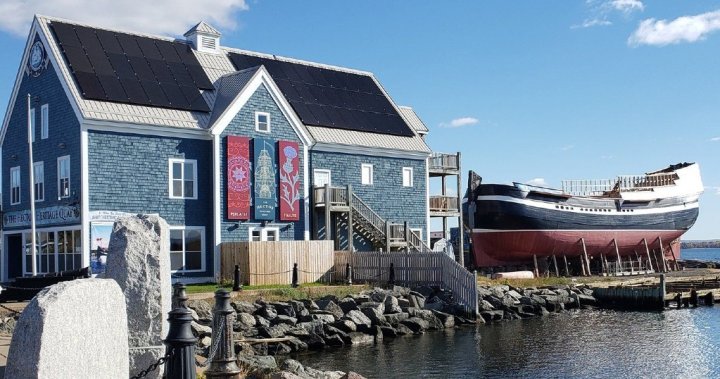The worn wooden ship sat gleaming in morning light, its masts reaching toward the blue sky over Pictou harbour. Even before her official relaunch, the Ship Hector already seemed to pulse with the whispers of nearly 200 Scottish immigrants who arrived on her decks in 1773, forever changing the cultural landscape of Nova Scotia.
“When I first saw her coming together after the restoration, I got goosebumps,” says Mary MacDonald, whose ancestors were among those original Highland Scots aboard the Hector. “It’s not just wood and canvas—it’s our living heritage.”
After six years of meticulous restoration work, this full-sized replica of the historic Ship Hector is set to return to the waters of Pictou Harbour this summer, marking a triumphant milestone for the community that has rallied around the vessel’s preservation.
The original Hector’s journey across the Atlantic carried 189 Highland Scots fleeing economic hardship. Their arrival marked one of the first major influxes of Scottish settlers to Nova Scotia—a province whose very name means “New Scotland” and whose cultural identity remains deeply connected to these roots.
“The story of the Ship Hector is fundamentally the story of Nova Scotia itself,” explains Darlene MacDonald, chair of the Ship Hector Society. “These passengers endured an 11-week crossing in terrible conditions, but they persevered. That spirit of resilience became part of our DNA here.”
The replica vessel, first launched in 2000 after a community-driven building project, had fallen into serious disrepair by 2017. Wooden hulls demand constant maintenance, and the maritime environment had taken its toll. The restoration project began with removing the ship from the water, revealing extensive damage that would require far more work than initially estimated.
What followed was a $1.7 million restoration effort that saw skilled shipwrights replacing rotted timbers, rebuilding sections of the hull, and carefully reconstructing historically accurate details. The provincial government contributed $1.2 million to the project, with the federal government and community fundraising covering the remainder.
The restoration team sourced specialized materials, including specific woods that would have been used in 18th-century shipbuilding. Master shipwright Leonard Harfield led a team that blended traditional techniques with modern preservation methods to ensure the ship’s longevity.
“Building a wooden ship is already challenging, but restoring one requires an entirely different skillset,” Harfield told me when I visited the site in early spring. “Every piece we replaced had to maintain historical accuracy while incorporating treatments that will help protect against future deterioration.”
For Pictou County, the Ship Hector represents more than heritage—it’s also an economic anchor. Tourism officials estimate the replica attracts over 20,000 visitors annually to the waterfront, where the Hector Heritage Quay interpretation center provides context for the vessel’s significance.
“When visitors can walk the decks of this ship, they connect with history in a way that reading a book or visiting a museum can’t match,” says Tourism Nova Scotia representative Janice Thompson. “They can feel the cramped quarters, imagine the rolling waves, and truly appreciate what these settlers experienced.”
The relaunch carries special significance for descendants of the original passengers. Genealogical records indicate that approximately one in three Nova Scotians can trace their lineage to Highland Scots, many of whom arrived following the path established by the Hector’s passengers.
Malcolm MacKenzie, whose family has lived in Pictou County for seven generations, participated in the restoration by volunteering his woodworking skills. “My great-great-great-grandfather came over just a few years after the Hector. Working on this ship feels like I’m honoring his journey,” MacKenzie says, running his hand along a freshly carved railing.
The Ship Hector’s story also intersects with complex histories. The Scottish settlement occurred on Mi’kmaq territories, and the full narrative requires acknowledging these Indigenous perspectives. The interpretation center has worked with Mi’kmaq representatives to incorporate this context into its educational materials.
“Any complete telling of the Hector story must include understanding whose lands these settlers were arriving to,” notes historian Catherine MacDonald of the Nova Scotia Museum. “The relationship between newcomers and the Mi’kmaq people is an essential part of our provincial history.”
The relaunch ceremony, scheduled for July, will feature traditional Scottish music, storytelling from descendants, and Mi’kmaq ceremonies acknowledging the shared history of the land. Once back in the water, the vessel will remain dockside as an immersive museum, though the restoration includes making it technically seaworthy.
Community excitement builds as the date approaches. Local schools have incorporated the Ship Hector’s history into their curricula, with students creating art projects and performing plays based on passengers’ journals. The town’s annual Hector Festival will coincide with the relaunch, bringing additional visitors to witness the historic moment.
“This ship represents the beginning of the Scottish story in Nova Scotia, but it’s not frozen in the past,” says Darlene MacDonald. “Each generation reinterprets what it means to them. For today’s Nova Scotians, it’s about understanding where we came from and how those journeys shape who we are now.”
As the restoration team makes final preparations, the Ship Hector stands as a powerful symbol of cultural persistence and community determination—a wooden vessel carrying not just the memory of 189 passengers, but the living heritage of a province still connected to its roots across the Atlantic.






